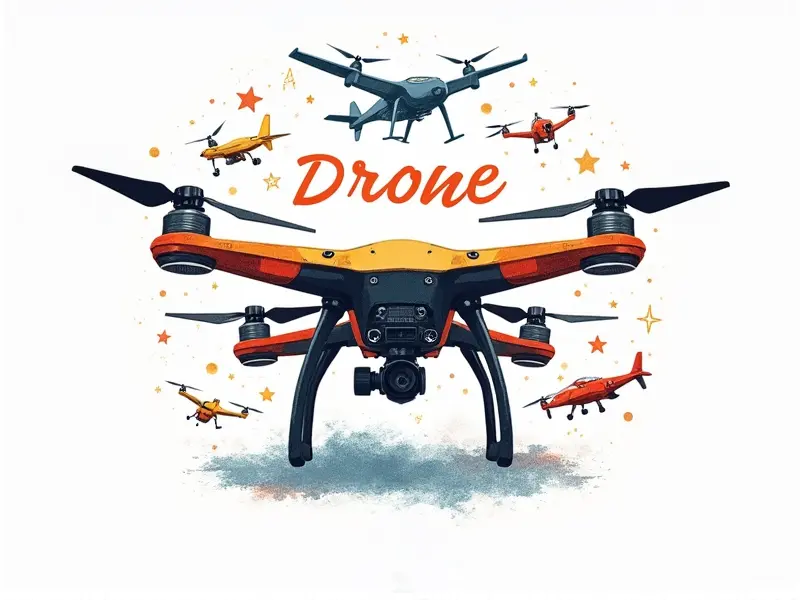DJI Mavic Air vs Mavic 2 Pro

DJI Mavic Air vs Mavic 2 Pro: A Comprehensive Guide
When it comes to choosing between the DJI Mavic Air and the DJI Mavic 2 Pro, drone enthusiasts often find themselves torn. Both models offer impressive features, but they cater to different needs and budgets. In this article, we will delve into a detailed comparison of these two drones, covering key differences, image quality, flight time, feature sets, price analysis, and more.
DJI Mavic Air vs Mavic 2 Pro: Key Differences
The DJI Mavic Air was launched in early 2018 as a mid-range drone with advanced features for its price point. The Mavic 2 Pro, introduced later that year, is positioned at the high-end of the market and offers significant improvements over its predecessor.
- Camera: The Mavic Air has a 1/2.3-inch CMOS sensor with a resolution of 12 megapixels (MP), whereas the Mavic 2 Pro boasts a larger 1-inch CMOS sensor capable of capturing up to 20 MP images.
- Battery Life: The Mavic Air has a flight time of approximately 21 minutes, while the Mavic 2 Pro offers around 31 minutes of battery life.
- Processor: The Mavic Air uses a Qualcomm Snapdragon processor, whereas the Mavic 2 Pro utilizes an octa-core processor for superior performance.
Image Quality Showdown: Mavic Air vs Mavic 2 Pro
The camera is one of the most critical components in any drone. The image quality difference between the Mavic Air and the Mavic 2 Pro is substantial due to their different sensor sizes.
- Mavic Air: With a 1/2.3-inch CMOS sensor, the Mavic Air produces excellent images for its class but falls short compared to higher-end drones like the Mavic 2 Pro.
- Mavic 2 Pro: Equipped with a 1-inch CMOS sensor and Hasselblad L1D-20c camera, it offers superior low-light performance, dynamic range, and color accuracy. The Mavic 2 Pro also supports RAW format for maximum flexibility in post-processing.
Flight Time Battle: Mavic Air VS Mavic 2 Pro
Battery life is crucial when you're out on a long shoot or exploring remote areas. Both drones provide impressive flight times, but the Mavic 2 Pro has an edge due to its larger battery capacity and more efficient power management.
- Mavic Air: Offers around 21 minutes of flight time per charge.
- Mavic 2 Pro: Provides up to 31 minutes of flight time, giving users a longer window for capturing stunning aerial footage and photos.
Feature Comparison: Mavic Air v Mavic 2 Pro
The feature sets of both drones are robust but differ in scope and depth. Here’s a breakdown of some key features:
- Mavic Air: Features such as ActiveTrack, obstacle avoidance, QuickShot modes (Burst, Timelapse, Hyperlapse), and 3D Mapping.
- Mavic 2 Pro: Includes advanced OcuSync 2.0 transmission system with a range of up to 8 kilometers, Hasselblad camera integration, and improved obstacle avoidance technology.
Best for Beginners: Mavic Air or Mavic 2 Pro?
For beginners looking to get into drone photography, the DJI Mavic Air is a great choice due to its user-friendly interface and affordable price point. It offers enough features to learn and experiment with aerial photography.
The DJI Mavic 2 Pro, on the other hand, might be too advanced for absolute beginners but provides a high level of performance that can cater to more experienced users who demand top-tier image quality and professional-grade features.
Price Analysis: DJI Mavic Air & Mavic 2 Pro
The cost difference between these two models is significant:
- Mavic Air: Typically priced around $799, making it a more accessible option for hobbyists and casual users.
- Mavic 2 Pro: Costs approximately $1,699, positioning it as a premium product suitable for professional photographers and videographers.
Upgrading from Mavic Air to Mavic 2 Pro?
If you already own the DJI Mavic Air and are considering an upgrade, here are some factors to consider:
- Image Quality: The larger sensor in the Mavic 2 Pro offers superior image quality, especially in low-light conditions.
- Battery Life: Longer flight times can be crucial for extended shoots or projects requiring continuous operation.
- New Features: The Mavic 2 Pro introduces several new features like improved obstacle avoidance and enhanced OcuSync technology, which could enhance your shooting experience.
Camera Capabilities: Mavic Air vs Mavic 2 Pro
The camera capabilities of the DJI Mavic Air and Mavic 2 Pro differ significantly:
- Mavic Air: Offers a standard 1/2.3-inch CMOS sensor with 4K video recording at up to 30 frames per second (fps).
- Mavic 2 Pro: Features a Hasselblad L1D-20c camera with a larger 1-inch CMOS sensor, supporting 4K/60fps video and RAW image capture.
Choosing Between Mavic Air & Mavic 2 Pro
The decision between the DJI Mavic Air and Mavic 2 Pro ultimately depends on your specific needs:
- Mavic Air: Ideal for hobbyists, casual users, or those who want a more affordable entry point into aerial photography.
- Mavic 2 Pro: Best suited for professional photographers and videographers requiring top-tier image quality and advanced features.
FPV Performance: Mavic Air vs Mavic 2 Pro
The First-Person View (FPV) performance of both drones is commendable, but the Mavic 2 Pro has a slight edge:
- Mavic Air: Provides an FPV range of up to 4 kilometers with OcuSync technology.
- Mavic 2 Pro: Offers extended FPV range of up to 8 kilometers, allowing for more expansive coverage and control over long distances.
Conclusion
The choice between the DJI Mavic Air and Mavic 2 Pro ultimately depends on your budget, intended use, and level of expertise. The Mavic Air is a fantastic entry-level drone with impressive features at an affordable price point. Meanwhile, the Mavic 2 Pro offers unparalleled professional-grade performance suitable for demanding users seeking top-tier image quality and advanced capabilities.
Whichever model you choose, both drones provide exceptional value in their respective categories, ensuring that you can capture stunning aerial footage and photos with ease.

